In this post, we will show you how to configure & use Hyper-V in Windows 11/10. You can create VMs or Virtual Machines using this screenshot tutorial. Virtual Machines or VMs let you run a different operating system on a single machine – the guest operating system. This often proves useful when testing software on different operating systems, test upgrade scenarios, or do other activities. Also, when you have finished the task, you can revert the machine to its formal state.
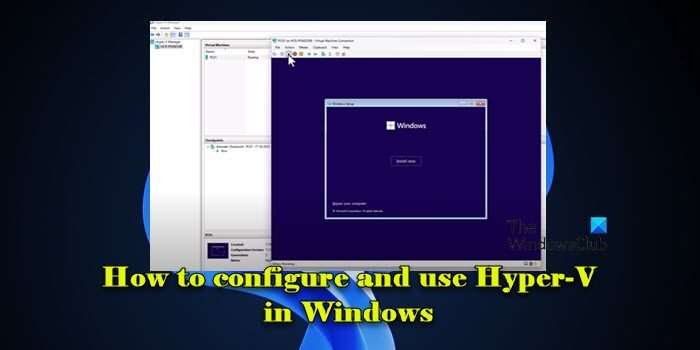
This tutorial educates you on how to configure Hyper-V and create Virtual Machines in Windows 11/10.
How to configure and use Hyper-V in Windows 11/10
First, ensure your system meets the following requirements for Hyper-V
System Requirements for Hyper-V
- Windows 11/10 Pro, Enterprise, or Education (Hyper-V is not available on Windows Home).
- 64-bit processor with Second Level Address Translation (SLAT).
- 4 GB of RAM or more.
- CPU support for VM Monitor Mode Extension (VT-c on Intel CPUs).
- BIOS/UEFI with hardware virtualization support (Intel VT-x or AMD-V) and Data Execution Prevention (DEP) enabled.
First, make sure that hardware virtualization support is turned on in the BIOS settings.
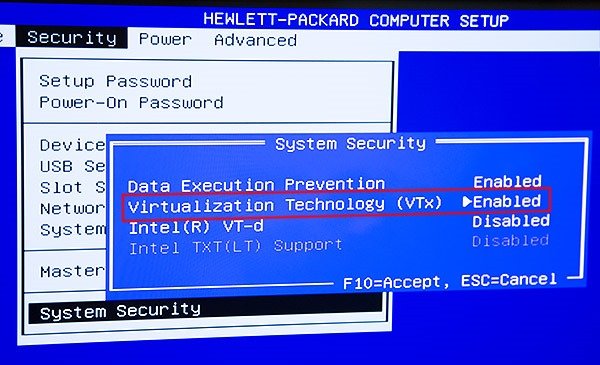
Only after confirming the hardware virtualization support is available and enabled, proceed further.
Enable Hyper-V in the “Turn Windows features on or off” dialog. To do so, type “turn windows features” in the Windows Search bar and click Open in the right-hand pane.
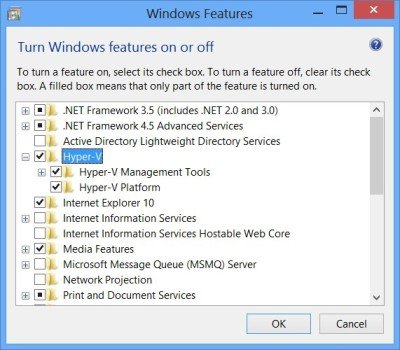
Configuring Hyper-V in Windows
Next, configure Networking for the Hyper-V environment. Before proceeding any further, make sure that a virtual switch has been created and that it is functional. To check this, open the Virtual Switch Manager, which you’ll find on the Actions panel in the Hyper-V Manager (Type Hyper-V at the Start Screen to find the Hyper-V Manager).
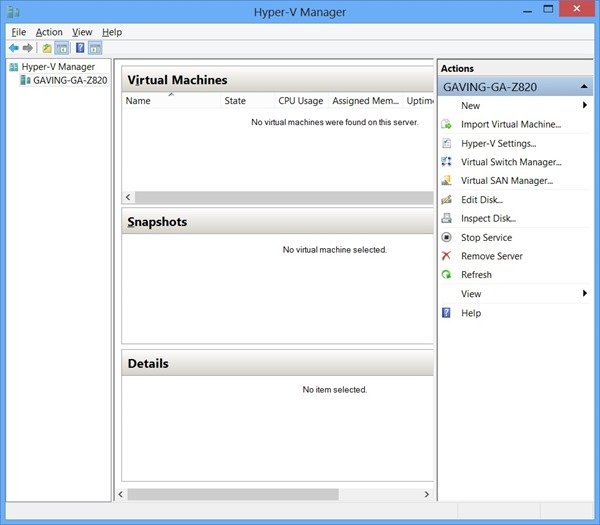
After clicking on “Virtual Switch Manager” in the Actions pane ensure that “External” is highlighted, and then click on the “Create Virtual Switch” button.
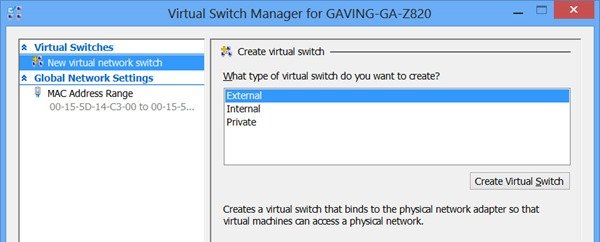
If you have more than one NIC in your system, ensure that you have selected the NIC to be used for VM external network connections.
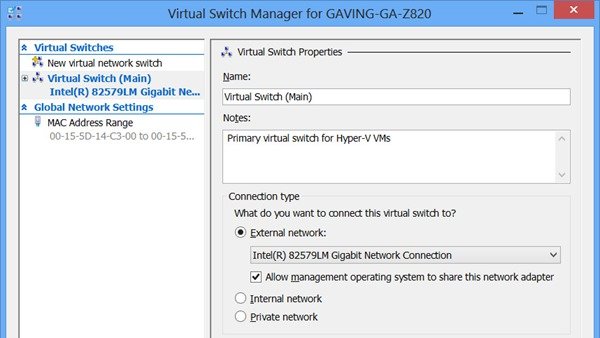
There are many different ways to create VMs, such as creating a VM from scratch using PXE boot from the network. To create a VM, you just click on “New Virtual Machine…” under “Actions” on the right panel in the Hyper-V Manager. A “New Virtual Machine Wizard” should pop up on your computer screen. Choose a VM name and specify a path for the VM file.
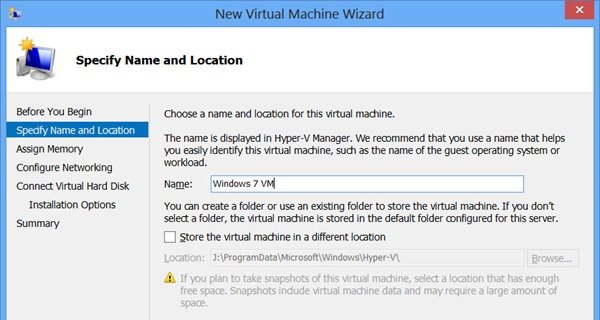
Next, switch to the ‘Assign Memory’ section. Here, although you can select from the range (8-13642 MB), allocate more than the minimum amount of memory to the virtual machine. So, specify the required amount.
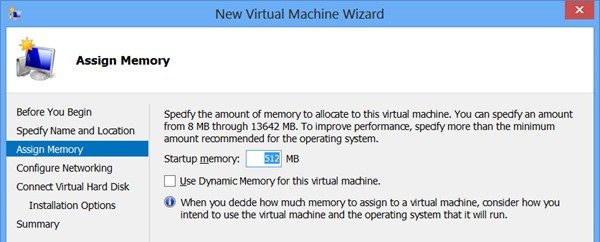
Then, from the right pane choose the ‘Configure Networking’ option and switch to the Virtual Switch you created earlier in earlier steps.
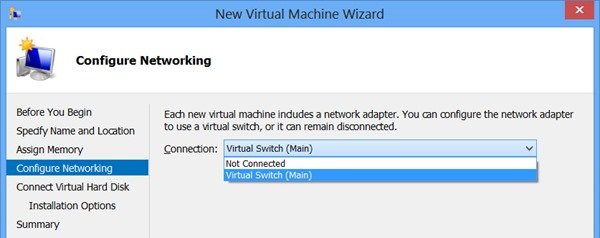
Next, choose ‘Connect Virtual Hard Disk’ and check the ‘Create a Virtual Hard Disk’ option. Click ‘Finish’. Before proceeding any further, create a Legacy Network Adapter in VM settings.
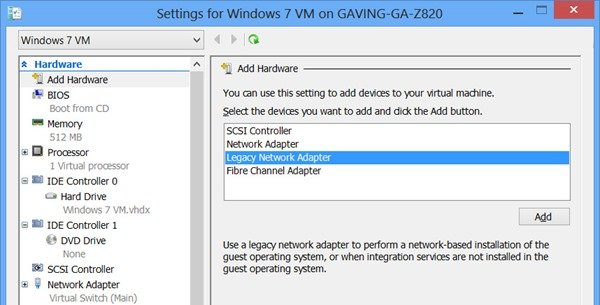
For this, launch the settings dialog for the VM that needs network boot support, and then click “Add Hardware” from the left pane. When the ‘Add Hardware’ section expands in the right column, hit the ‘Add’ button and make sure that the proper virtual switch is used.
Read: How to create Hyper-V Virtual Machine Desktop Shortcut
Once done, the VM becomes ready for PXE boot and the installation of the OS. Upon noticing and clicking the green “Start” button for your VM in the right pane of the Hyper-V Manager, you’ll be presented with the familiar PXE boot menu where you can press F-12 for a network boot.
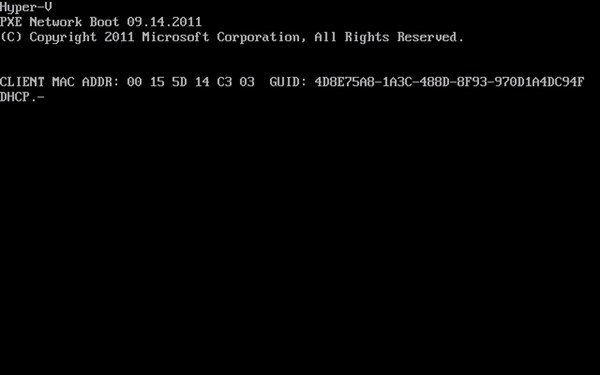
This works just like network booting from a physical machine. Check out the usage of network boot to start a clean Windows 7 install.
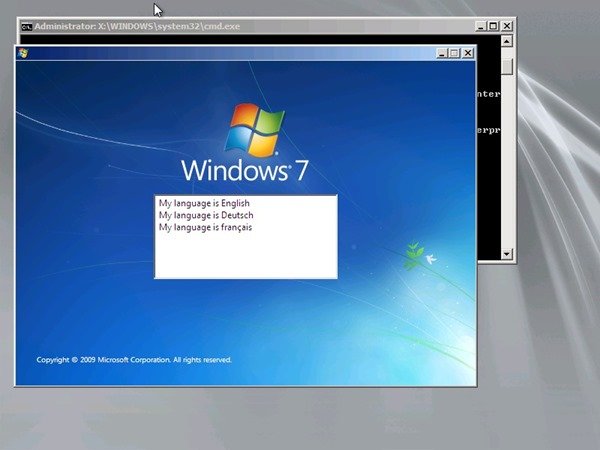
Once you have your VMs setup, there are two options for interacting with and connecting to your Virtual Machines: the Hyper-V Manager and the Remote Desktop Connection using Remote Desktop Protocol. Choose the option you feel comfortable using.
That’s it! I hope you find this useful.
Windows Home user? This post will show you how to install and enable Hyper-V on Windows Home.
How to activate Windows Hyper-V?
To activate Hyper-V on a Windows 11/10 PC, ensure your system meets the necessary requirements and hardware virtualization support is enabled in your BIOS/UEFI settings. Press Win + R, type ‘optionalfeatures’ in the Run dialogue, and press Enter. Check the Hyper-V box in the Windows Features dialogue, ensuring that both ‘Hyper-V Management Tools’ and ‘Hyper-V Platform’ are selected. Click OK and allow Windows to apply the changes. Once your PC restarts, Hyper-V will be activated and you can access it via the Hyper-V Manager from the Start menu.
How does Windows Hyper-V work?
Windows Hyper-V is Microsoft’s native hypervisor that enables virtualization on Windows 11/10 PCs. It works by abstracting the underlying hardware of the host machine, creating a virtual environment where each virtual machine (VM) operates independently with its own set of virtual components (CPU, memory, etc.). Hyper-V uses hardware-assisted virtualization technologies to efficiently allocate resources between the host OS and the VMs, allowing multiple operating systems to run simultaneously on a single machine.
Read next: How to disable Hyper-V in Windows.
Leave a Reply